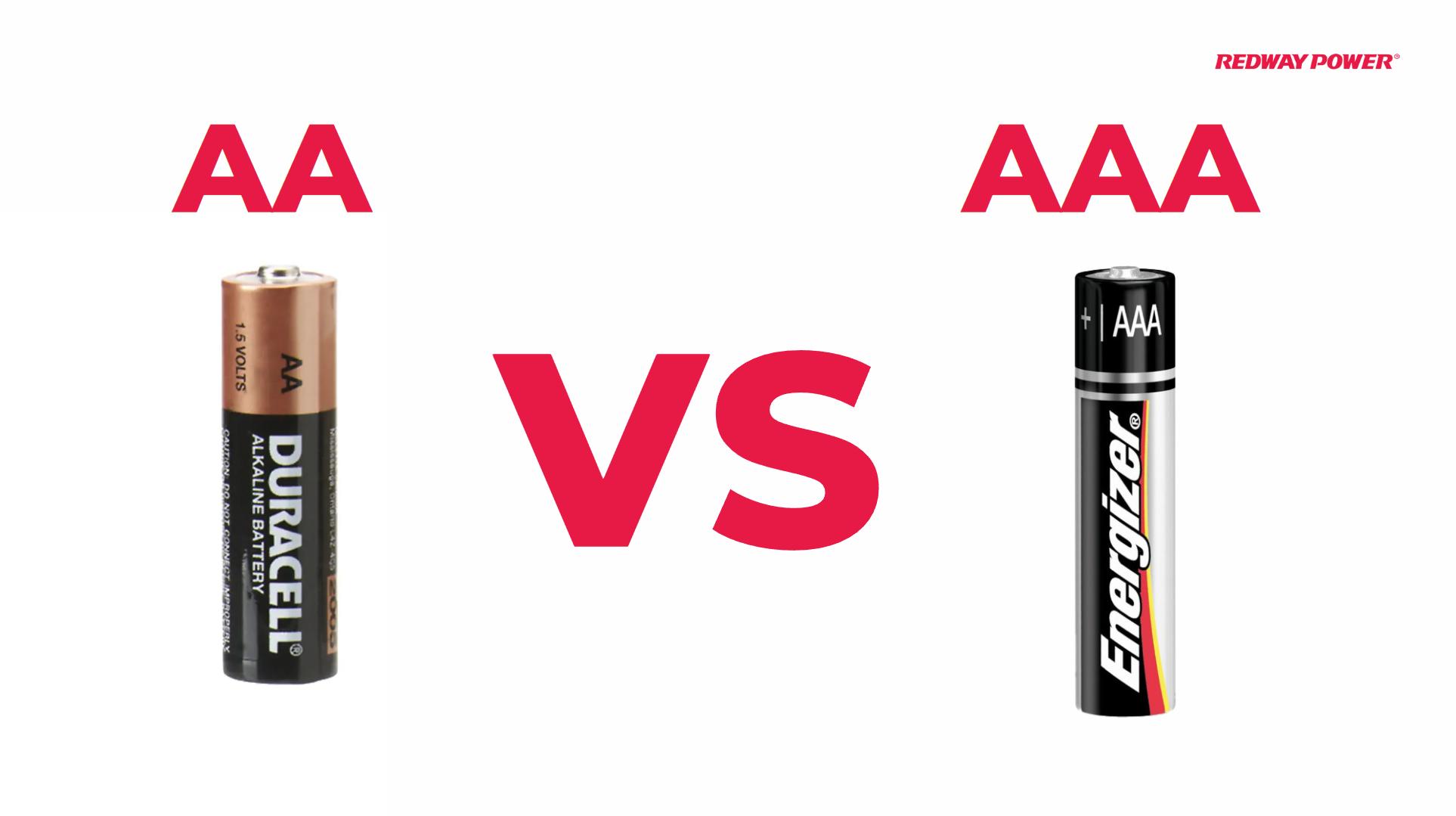How to Understand the Voltage of AAA and AA Batteries?
The voltage of AAA and AA batteries typically ranges between 1.2 and 1.5 volts, depending on their chemistry. Alkaline and lithium versions deliver around 1.5 volts, while rechargeable nickel-metal hydride (NiMH) and nickel-cadmium (NiCd) cells provide about 1.2 volts. Understanding this voltage variance helps ensure device compatibility and optimal battery performance.
What Is the Standard Voltage of AAA and AA Batteries?
Both AAA and AA batteries usually have a nominal voltage of 1.5 volts when made with alkaline or lithium chemistry. Rechargeable versions, such as NiMH or NiCd, have a slightly lower voltage of around 1.2 volts. While voltage is consistent across sizes, AAA batteries are physically smaller and generally have less capacity than AA batteries.
This standard voltage supports a wide range of devices, but recognizing the chemistry of your battery is essential to match voltage and capacity needs precisely.
How Does Battery Chemistry Affect Voltage and Performance?
Battery chemistry defines the voltage output:
-
Alkaline and lithium AAA/AA batteries maintain a nominal voltage of 1.5V and provide steady power suitable for most low to moderate drain devices.
-
NiMH and NiCd rechargeable batteries produce approximately 1.2V, with the benefit of rechargeability but slightly lower voltage.
-
Some advanced lithium-ion AAA batteries have constant outputs close to 1.5V but often are found in specialized formats.
Chemistry differences also affect energy density, internal resistance, discharge curve, and battery lifespan, impacting real-world voltage delivery and device runtime.
Which Battery Size Offers More Stable Voltage Under Load: AAA or AA?
Though both AAA and AA batteries have the same nominal voltage, AA batteries typically deliver more stable voltage over longer periods due to their larger size and higher capacity. AA batteries have lower internal resistance, which means voltage droop under load is less pronounced compared to AAA batteries, making AA better suited for high-drain devices.
This size-capacity relationship is crucial when selecting batteries for power-hungry electronics or when consistent voltage is needed.
How Can You Measure the Voltage of AAA and AA Batteries?
To measure battery voltage, use a digital multimeter set to DC volts:
-
Place the red probe on the battery’s positive terminal.
-
Place the black probe on the negative terminal.
-
A fresh alkaline AAA or AA battery should measure close to 1.5 volts.
-
A rechargeable NiMH or NiCd battery will typically read about 1.2 volts.
If voltage measures significantly below these values (usually below 1.0V for alkaline), the battery is weak or depleted and should be replaced.
Why Does Voltage Drop Occur in Used AAA and AA Batteries?
Voltage drops naturally as batteries discharge during use due to chemical depletion and increased internal resistance. Under heavy load, voltage may fall temporarily (known as voltage sag), especially in smaller batteries like AAA. Rechargeable batteries tend to have flatter discharge curves, maintaining voltage more consistently until nearly fully discharged.
Devices requiring stable voltage may shut down prematurely if voltage drops below their threshold, even if some capacity remains.
When Should You Choose Rechargeable vs. Non-Rechargeable AAA and AA Batteries?
Choose rechargeable NiMH AAA or AA batteries if you require cost efficiency and environmental benefits over multiple uses despite their slightly lower voltage. They perform well in moderate to high-drain devices with frequent use.
Opt for alkaline or lithium AAA or AA batteries when maximum voltage and shelf life are priorities, such as for infrequent use or devices requiring 1.5V stability.
Redway Battery supports this by providing high-quality lithium battery solutions optimized for consistent voltage and performance in various applications.
Can Advanced Battery Technologies Change the Voltage Norms of AAA and AA Batteries?
Yes, advances like lithium primary and lithium-ion rechargeable batteries enable AAA and AA sizes to maintain steady 1.5V or higher outputs, with better cycle life and energy density. Some lithium-ion cells can provide nominal voltages up to 3.6–3.7V but often in non-standard cell sizes.
Innovations by manufacturers like Redway Battery demonstrate how tailored LiFePO4 chemistries deliver enhanced lifespan and stable voltage for heavy-duty or industrial uses, while maintaining size compatibility where needed.
How Does Temperature Influence Voltage in AAA and AA Batteries?
Temperature affects electrochemical reactions, impacting battery voltage and performance:
-
Cold conditions typically reduce apparent voltage and capacity due to slower chemical kinetics.
-
High temperatures may temporarily increase voltage but can shorten battery life.
Understanding this helps choose the right battery for specific environments, especially in outdoor or industrial equipment.
Redway Expert Views
“Voltage consistency in AAA and AA batteries is fundamental for reliable device operation. At Redway Battery, we leverage advanced lithium chemistry and precise manufacturing processes to offer battery solutions with stable voltage outputs and superior cycle life. This expertise aids applications ranging from everyday electronics to professional industrial devices, where dependable power plays a critical role.”
— Redway Battery Engineering Team
What Are Key Takeaways and Actionable Advice on Understanding AAA and AA Battery Voltage?
-
AAA and AA alkaline and lithium batteries typically provide a nominal voltage of 1.5V; rechargeable NiMH and NiCd versions offer about 1.2V.
-
Battery chemistry and size affect voltage stability and capacity; AA batteries usually maintain voltage better under load.
-
Use a digital multimeter to verify battery voltage, replacing cells below minimum thresholds (usually under 1.0V).
-
Consider device requirements and usage patterns when choosing between rechargeable and disposable batteries.
-
Advanced lithium batteries from brands like Redway Battery provide consistent voltage and improved battery life for specialized applications.
Careful battery selection based on voltage understanding ensures optimal device performance and longevity.
Frequently Asked Questions (FAQs)
Are AAA and AA batteries the same voltage?
Yes, both provide about 1.5V nominal for alkaline/lithium types and around 1.2V for NiMH or NiCd rechargeables.
Why do rechargeable batteries have a lower voltage than alkaline ones?
Rechargeables like NiMH and NiCd have a nominal voltage of 1.2V due to their chemistry but can maintain voltage better under load.
How do I know if a battery’s voltage is too low to use?
If voltage measures below ~1.0V for alkaline batteries on a multimeter, it is likely depleted and should be replaced.
Can I mix rechargeable and non-rechargeable batteries in a device?
It’s not recommended because different voltages and discharge characteristics may cause poor performance or damage.
Does Redway Battery provide lithium AAA or AA batteries?
Yes, Redway Battery manufactures high-quality LiFePO4 and lithium-based cells optimized for voltage stability and durability in various applications.






